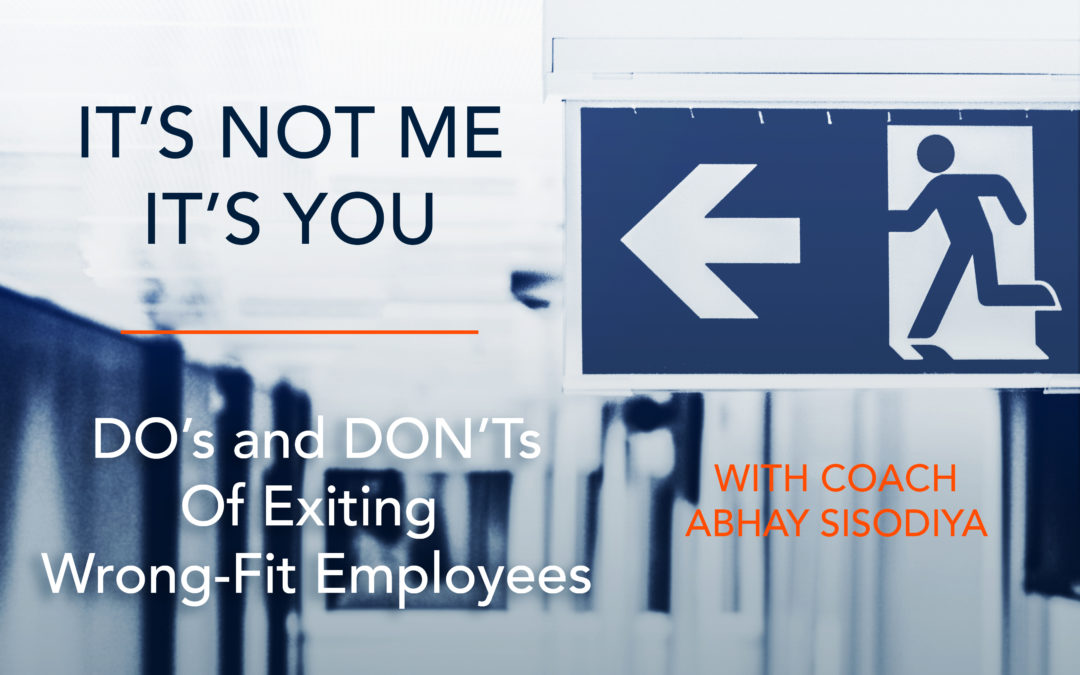“Would you enthusiastically re-hire everyone on your team?”
Our coaches often ask this question when working through the People Decision with their clients. The results vary, but most executive teams admit that they have one or more “C Players,” employees that struggle to maintain productivity and fail to demonstrate company core values.
Toxic Employees
Gravitas Coach Abhay Sisodiya describes the experience of having a wrong-fit employee as “toxic.” In his over 20 years of leadership, human resources and talent management experience, Sisodiya saw the long-term effects of “wrong-fit” employees to company culture and growth. “They infect others,” he shared, “they’re a bad apple in a basket.”
Determining who is and isn’t a right fit for your company can be a process. “The C players are easy,” Sisodiya says, “Everyone can see them. It’s the B/C players that are more difficult because they produce good results, and they do good work, but they’re just not good for the organization.”
“You can either retrain the individual, transfer them into another department or you need to make the decision exit them. If you want to have poor company culture, don’t do anything at all. My job is to coach executives through the process, to say to them, ‘this person may be doing good work, but they are leaving dead bodies behind.’”
DO’s and DON’Ts
If you need to exit a wrong-fit employee, Sisodiya recommends a few Do’s and Don’ts in this process.
DO solicit feedback from others: “Protect your company culture,” Sisodiya warns. “It shouldn’t only be your own voice.” Talk to other employees who have worked directly with the individual and may have insight on significant or relevant issues to address.
DO start early: If you begin to suspect that an employee might be a wrong fit for your company, ask questions. “How do you feel about the company?” “What are you struggling with?” Don’t leave the conversation until it’s inevitable.
DO lead with transparency: “If legally possible, share some of the reasons they are exiting,” Sisodiya suggests. In this way, the process can become a learning opportunity for your employee.
DON’T make it personal: “Try not to be biased, even if you have had a bad experience with the employee,” Sisodiya said. “Treat them respect, or it’s your culture that takes the hit.”
DON’T take too long: “Protect your culture. If you take too long, they are infecting it further.”
DON’T forget they’re human: “Be mindful that these are people. Treat them with dignity and consideration. Lead with grace and be mindful of your core values.”
Preventative Measures
“Firing anyone affects your culture,” Sisodiya warns. To avoid this, it’s essential to focus on hiring right-fit employees that exemplify company values and culture, as well as meeting the necessary job requirements. By placing emphasis on the fit early in the hiring process, companies can avoid bringing on toxic employees.
We also recommend that your leadership team has an ongoing, regular review of their talent to ensure that they are continuously working to develop A and B players and remove B/C and C players from the organization early on.
“We believe that it’s really important to come up with core values that you can commit to. And by commit, we mean that you’re willing to hire and fire based on them. If you’re willing to do that, then you’re well on your way to building a company culture that is in line with the brand you want to build.” – Tony Hsieh, CEO, Zappos

Coach Abhay Sisodiya
Abhay brings his Gravitas Impact clients over 20 years of leadership, human resources and talent management experience and expertise in the industry.
